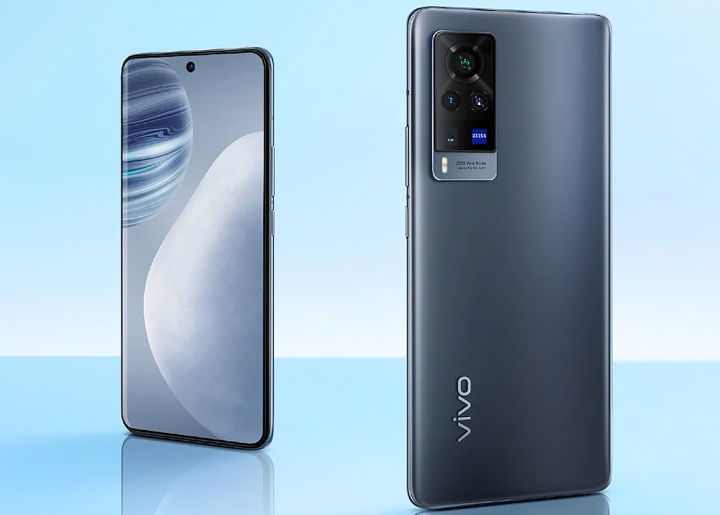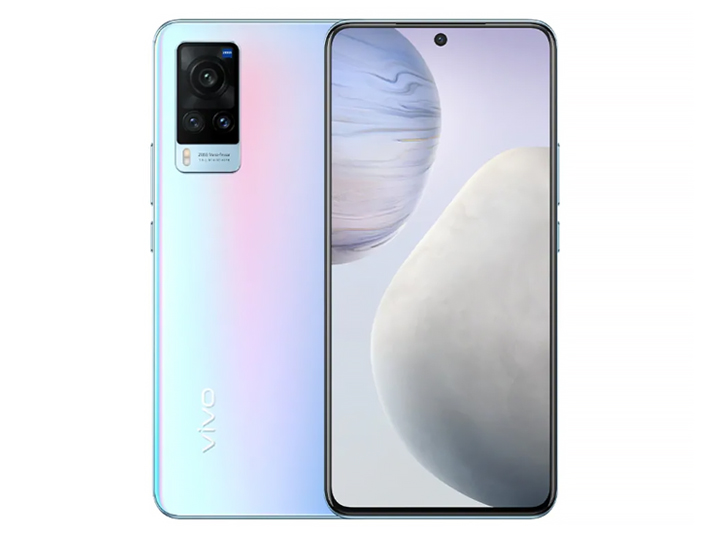Vivo has launched new X60-series smartphones. Highlights include a 120Hz AMOLED display, up to 12GB RAM, and Zeiss optics. Read more to find about Vivo X60, Vivo X60 Pro Price in India, Specifications, Features

Price and Availability
| Vivo X60 (starting) | CNY 3,498 (approx Rs 39,300) |
| Vivo X60 Pro | CNY 4,498 (approx Rs 50,600) |
The Vivo X60 is priced in China at CNY 3,498 (approx Rs 39,300) for the 8GB RAM/ 128GB storage variant. It comes in Grey, Purple, and White color options.
While the 8GB RAM/ 256GB storage model comes with a price tag of CNY 3,798 (approx Rs 42,700), the 12GB RAM/ 256GB storage model costs CNY 3,998 (approx Rs 45,000).
On the other hand, the Vivo X60 Pro is priced at CNY 4,498 (approx Rs 50,600). It comes in a single 12GB RAM/ 256GB storage option and two color options – Grey and Purple.
Shipping will start in China on January 8. As of now, there is no information about the Indian price tag and launch date.
The company also announced that it plans to launch a Vivo X60 Pro+ smartphone (with the Qualcomm Snapdragon 888 SoC) in January.
Also read: HP ProBook 635 Aero G7 With AMD Ryzen 4000 Series Mobile Processor Launched in India
Specifications and Features
Both Vivo X60 and Vivo X60 Pro come with Samsung’s Exynos 1080 procesor, Zeiss optics, and an E3 AMOLED display with up to 120Hz refresh rate and.
The new Vivo handsets run the Android 11 operating system with OriginOS on top. Connectivity options include 5G, 4G LTE, Wi-Fi, Bluetooth 5.1, GPS/ A-GPS, NFC, and a USB Type-C port.
Sensors on the devices include an accelerometer, ambient light sensor, gyroscope, magnetometer, proximity sensor, and an in-display fingerprint sensor. Let’s take a closer look:
Vivo X60 Pro
| Processor | octa-core Exynos 1080, ARM Mali-G78 GPU |
| RAM | 12GB LPDDR4X |
| Internal Storage | 256GB UFS 3.1 |
| Display | 6.56-inch, E3 AMOLED, Full HD+ (2376 x 1080 pixels) , 19.8:9 aspect ratio, 120Hz refresh rate, P3 color gamut |
| OS | Android 11 |
| Primary (rear) camera | Quad (48MP + 13MP + 13MP + 8MP) with flash |
| Front Camera | 32MP |
| Battery | 4200mAh |
The new smartphone is powered by an octa-core Exynos 1080 processor along with ARM Mali-G78 GPU and 12GB LPDDR4X RAM.
The Vivo X60 Pro is backed by a 4,200mAh battery that supports 33W fast charging. It comes with 256GB UFS 3.1 internal storage.
The dual-SIM smartphone features a 6.56-inch E3 AMOLED display with Full HD+ (2376 x 1080 pixels) resolution, a 19.8:9 aspect ratio, 120Hz refresh rate, and P3 color gamut. It supports HDR10 and HDR10+ standards.
In terms of optics, the Vivo X60 Pro sports a quad rear camera setup with a 48MP primary sensor (f/1.48 aperture), a 13MP ultra-wide-angle lens, a 13MP portrait shooter, and an 8MP periscope shooter (f/3.4).
Camera features include a laser autofocus sensor, OIS (optical image stabilization), 5x optical zoom and 60x super zoom.
For selfies and video calling, the handset comes equipped with a 32MP front camera with an f/2.45 lens.
Also read: Oppo Reno 5 Pro+ 5G Launched With Sony IMX766 Camera, 12GB RAM
Vivo X60
- ZEISS optics
- 32MP selfie cam
- Android 11 OS
- OriginOS
- 5G
- 4G LTE
- Wi-Fi
- Bluetooth 5.1
- GPS/ A-GPS
- NFC
- USB Type-C port
- 6.56-inch E3 AMOLED display
- 120Hz refresh rate
- P3 color gamut
- In-display fingerprint sensor
- 33W fast charging support
The Vivo X60 comes with mostly similar specs as the Vivo X60 Pro. However, it is a slightly toned-down version.
The new smartphone is powered by an octa-core Exynos 1080 processor along with ARM Mali-G78 GPU, up to 12GB LPDDR4X RAM, and up to 256GB UFS 3.1 storage.

In terms of optics, the Vivo X60 sports a triple rear camera setup with four-axis optical image stabilization (OIS). It uses a 48MP primary sensor (f/1.79), a 13MP ultra-wide-angle lens (f/2.2), and a 13MP portrait shooter.
For selfies and video chats, the new handset sports a 32MP front camera with an f/2.45 lens. It is backed by a 4,300mAh battery on Vivo X60, with 33W fast charging.
Also read: Xiaomi Mi 11 Launched With 2K Display, 108MP Camera, Wireless Charging
What do you think of the price and specs of the new smartphones? Share your views with us in the comments section below.






